How to Render Tallow to use for Skincare: A Step by Step Guide
Learn how I render our farms beef tallow and embrace this ancient skincare trick!
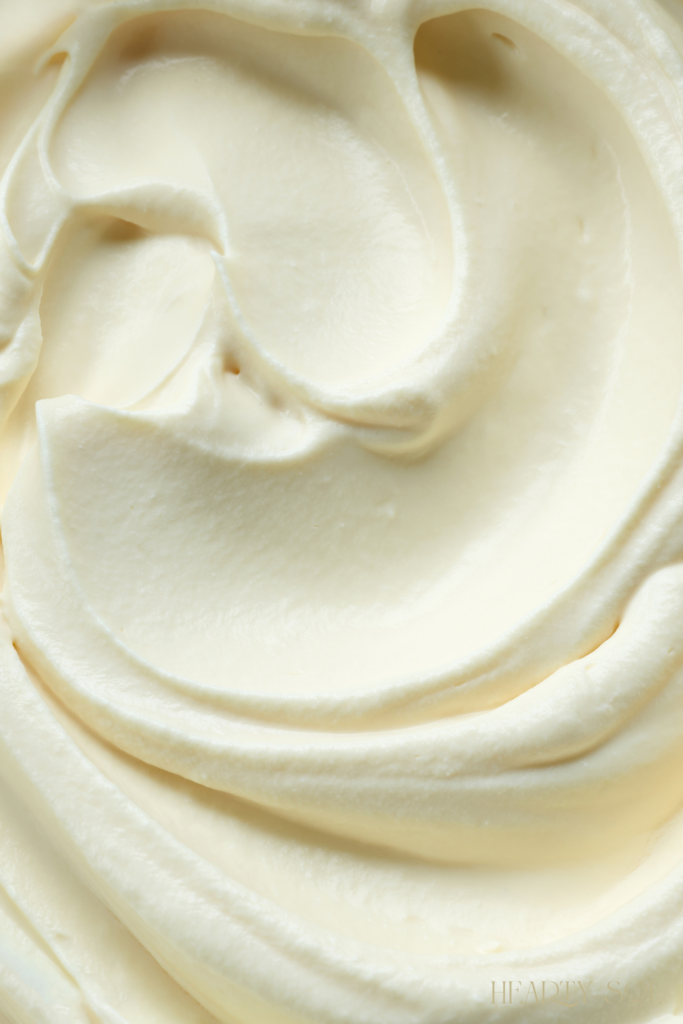
Skincare from our ancestors
Using beef tallow for skincare is another one of those ancient tricks that have come back around to grace our generation. We whip up the tallow scented with cocoa butter, sweet orange, or frankincense for smooth and soothing moisture. With fall upon us and winter ahead we are thankful for a homemade, reliable source of moisture for our skin!
Tallow, the rendered fat from beef or lamb, has become a popular ingredient in natural skincare for its deeply nourishing and moisturizing properties. Traditionally used for everything from cooking to soap-making, tallow has recently gained attention as an effective, nutrient-rich moisturizer. In this post, we’ll walk you through the process of rendering tallow at home, share tips on using it for skincare, and answer some frequently asked questions to ensure you get the most out of this natural ingredient.
- What is Tallow and why should I be using it on my skin?
- Health Benefits
- Step-by-Step Instructions
- Tips
- Answering your Questions
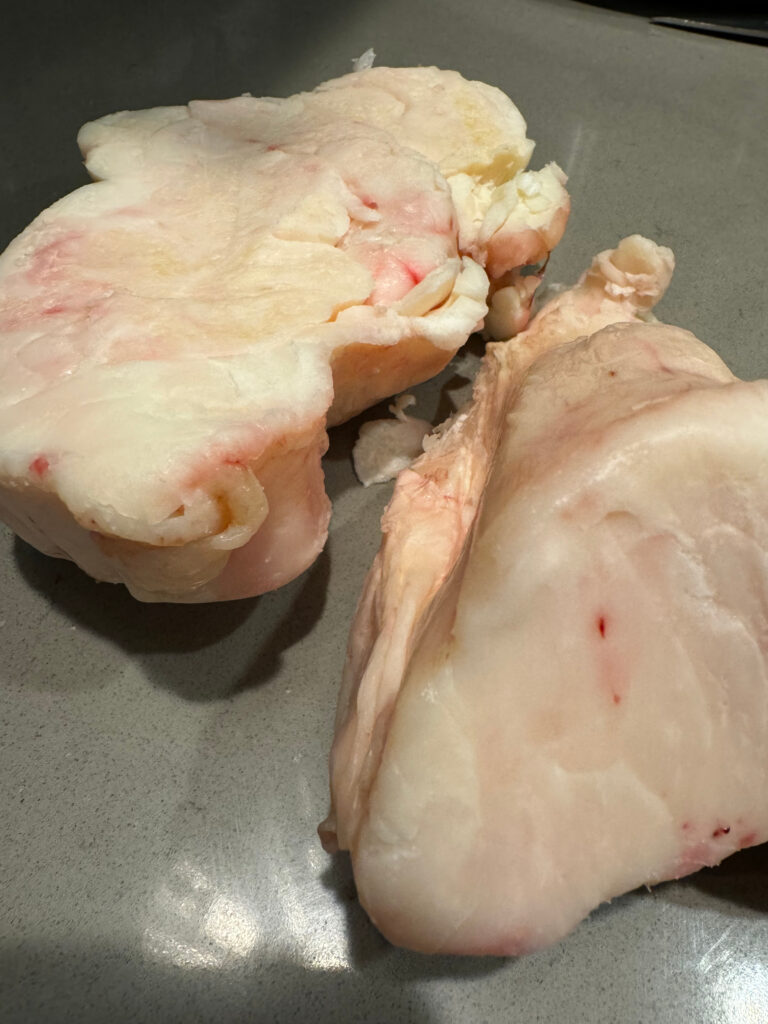
Not into DIY skincare?
Preorder my Whipped Tallow Balm here.
What is Tallow and why should I be using it on my skin?
Tallow is animal fat, typically derived from beef or lamb, that has been rendered (melted down and purified) to remove any impurities. Once rendered, tallow becomes a smooth, creamy substance that’s packed with beneficial fatty acids and vitamins A, D, E, and K — all of which are fantastic for skin health.
Tallow has a unique profile of fatty acids, including palmitic and stearic acid, that closely resemble the composition of human skin cells. This makes it especially compatible with our skin, providing deep hydration and promoting barrier repair. Tallow-based balms and moisturizers can be helpful for people with dry, sensitive, or irritated skin, as well as those looking for a sustainable and natural skincare option.
Tallow has a long history of being used in soap, candles, cooking, and even fuel. It was so popular because it is such a versatile product that could be used in many household activities. It’s latest re-popularization has to do with its effect on skin care. In the idea of using everything an animal can offer, ancient civilians were able to find uses for the beef fat (the tallow) which included treating their skin – both face and body.
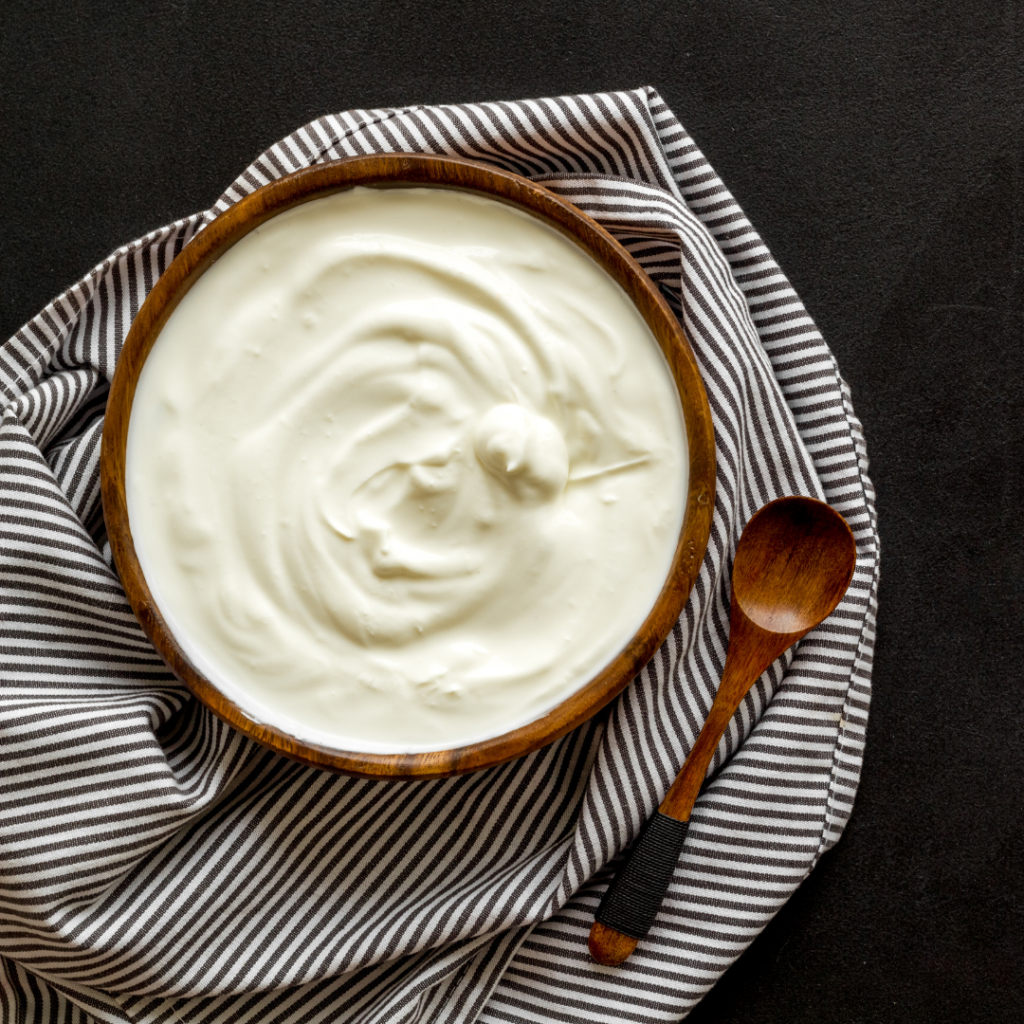
Health Benefits of using Whipped Tallow
Using tallow in skincare offers several health benefits beyond moisturization:
- Supports Skin Barrier Repair: Tallow is rich in stearic and palmitic acids, which help reinforce the skin barrier, protecting it from environmental stressors and reducing moisture loss.
- Natural Source of Anti-Inflammatory Omega Fatty Acids: Grass-fed tallow contains a balanced ratio of omega-3 and omega-6 fatty acids, which can reduce inflammation, soothe irritation, and support the healing of skin conditions like eczema and psoriasis.
- Rich in Antioxidants and Fat-Soluble Vitamins: Tallow provides vitamins A, D, E, and K, which are crucial for skin cell repair, regeneration, and elasticity. These vitamins can help prevent signs of aging, improve skin texture, and enhance the skin’s resilience.
- Non-Toxic and Free of Synthetic Additives: Unlike many commercial skincare products, pure tallow is natural, non-toxic, and typically free of preservatives and synthetic chemicals, making it suitable for sensitive and allergy-prone skin.
- Promotes Elasticity and Smoothness: The saturated fats in tallow mimic the skin’s natural sebum, helping to lock in moisture, promote suppleness, and improve skin texture, especially for dry or mature skin types.
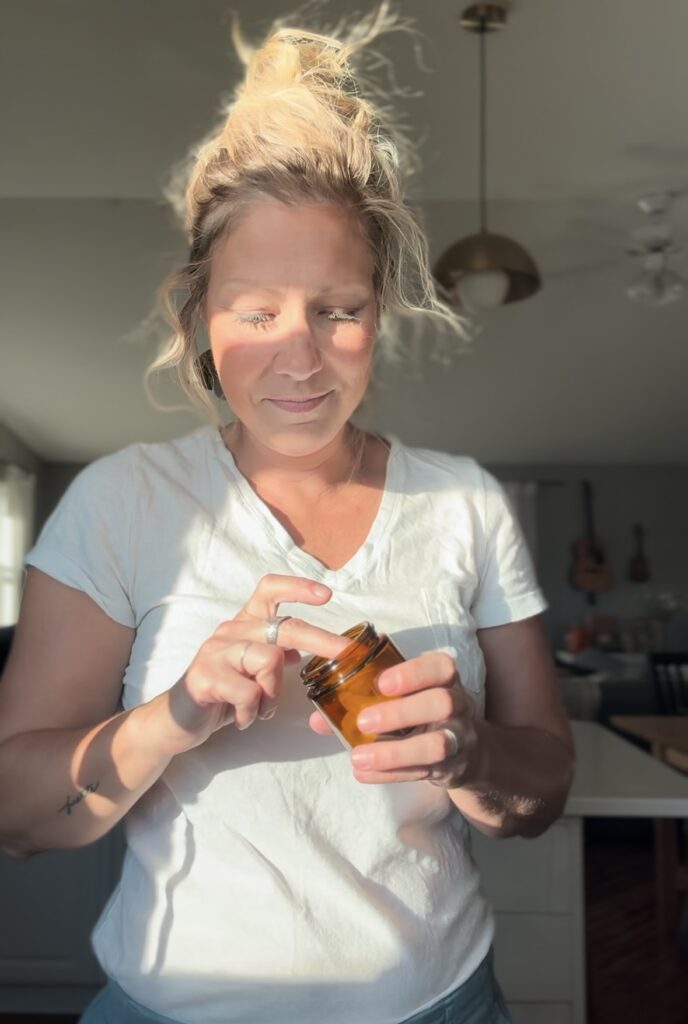
How to Render Beef Tallow for Skincare
A Step-by-Step Guide
What You’ll Need:
- Beef or lamb fat (ask for suet from a butcher, as it’s the most ideal fat for rendering)
- Slow cooker or large pot
- Sharp knife for chopping
- Cheesecloth or fine mesh strainer
- Clean glass jars or containers for storage
Step 1: Prepare the Fat
Begin by chopping the fat into small pieces, around 1-inch cubes or smaller. Smaller pieces allow the fat to melt faster and more evenly. For an even smoother texture, you can briefly pulse the fat in a food processor to break it down further. I like to cube mine roughly.
Step 2: Heat the Fat Slowly
Place the chopped fat into a slow cooker or heavy-bottomed pot. Set the heat to low; the goal is to melt the fat slowly without burning it. This process can take anywhere from 3-12 hours, depending on the amount of fat and your heat source. Patience is key here for the best results!
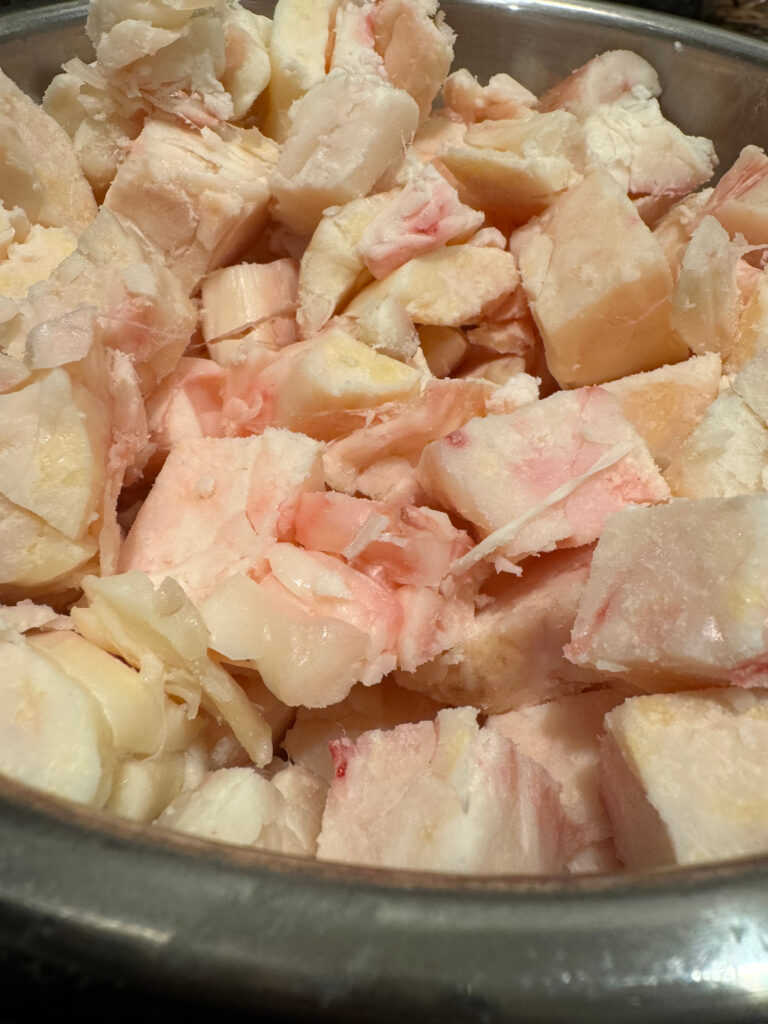
Step 3: Stir Occasionally
As the fat begins to melt, you’ll notice the liquid separating from the solid pieces. Stir every hour or so to ensure even heating and prevent sticking. If using a slow cooker, leave the lid slightly ajar to allow moisture to escape, which will help keep the tallow fresher longer.
Step 4: Strain the Rendered Tallow
Once most of the fat has melted and only small, browned bits (cracklings) remain, it’s time to strain. Carefully pour the hot liquid through a cheesecloth or fine mesh strainer into a heatproof bowl or directly into clean glass jars. Straining removes any impurities, leaving you with a smooth and clear tallow. I then add the clear liquid back to my crock pot and refrigerate for the night. The next day, I will scrape any remaining impurities off of the bottom of the solid disk that has formed in my crock pot, then heat it back up again.
Step 5: Repeat
You want the purest form of tallow possible for skincare. So I repeat this process 2 more times, to get a nice pure white tallow, removing all impurities from it. In total this can be a 3-4 day process.

Step 6: Cool and Store
Once cooled, but not yet solid, you can whip your tallow with a hand mixer. It’s at this time that you can add essential oils or any other additions. Properly rendered tallow can last up to a year if kept cool and sealed.
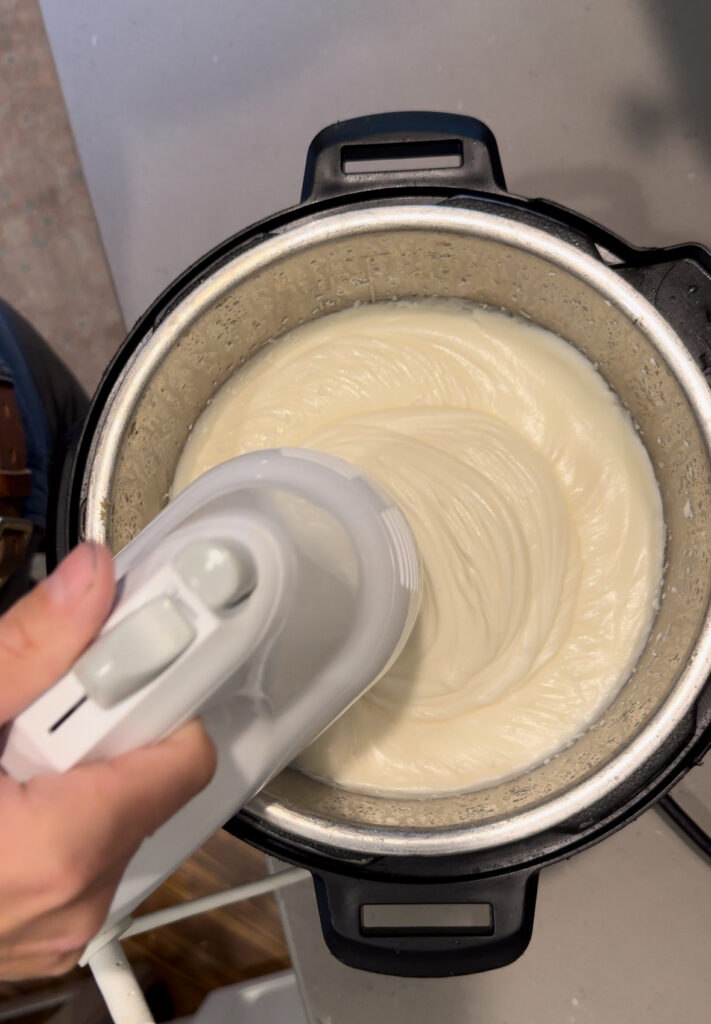
Tips for Using Beef Tallow in Skincare
- Add Essential Oils: While the scent of rendered tallow is usually mild, you can add essential oils like lavender, frankincense, or chamomile to enhance fragrance and add extra skincare benefits. Add the oils when the tallow is warm but not hot to preserve their potency.
- Make Whipped Tallow Balm: Whip the tallow with a hand mixer until it reaches a creamy, fluffy consistency. This makes it easier to apply and can be especially helpful if you find the texture of pure tallow a bit heavy.
Frequently Asked Questions
1. Does tallow smell bad? Properly rendered tallow has a mild scent, but it shouldn’t smell “meaty” or unpleasant. Any strong odor typically indicates that the tallow wasn’t fully rendered, or that the fat wasn’t fresh. Adding essential oils can also help mask any lingering scent.
2. Can I use any kind of animal fat to make tallow? While beef and lamb fat are traditionally used for tallow, you can render fat from other animals. However, beef and lamb tallow are most commonly used for skincare due to their skin-friendly fatty acid composition.
3. Is tallow suitable for all skin types? Tallow is generally safe for most skin types, especially dry and sensitive skin. However, if you have oily or acne-prone skin, test a small patch first, as tallow can feel quite rich. Some people with oily skin still find it beneficial, especially when used sparingly.
4. How long does homemade tallow last? Stored in a cool, dark place, properly rendered tallow can last up to a year. If kept in the refrigerator, it may last even longer. Always check for any changes in smell or texture before using it, as this could indicate spoilage.
5. Can I use tallow as a moisturizer alone, or should I mix it with other ingredients? You can absolutely use tallow as a moisturizer on its own. However, it also works well as a base for other DIY skincare products. Once cooled, mixing it with oils like jojoba or rosehip can create a lighter texture, and adding essential oils can bring added benefits and fragrance.
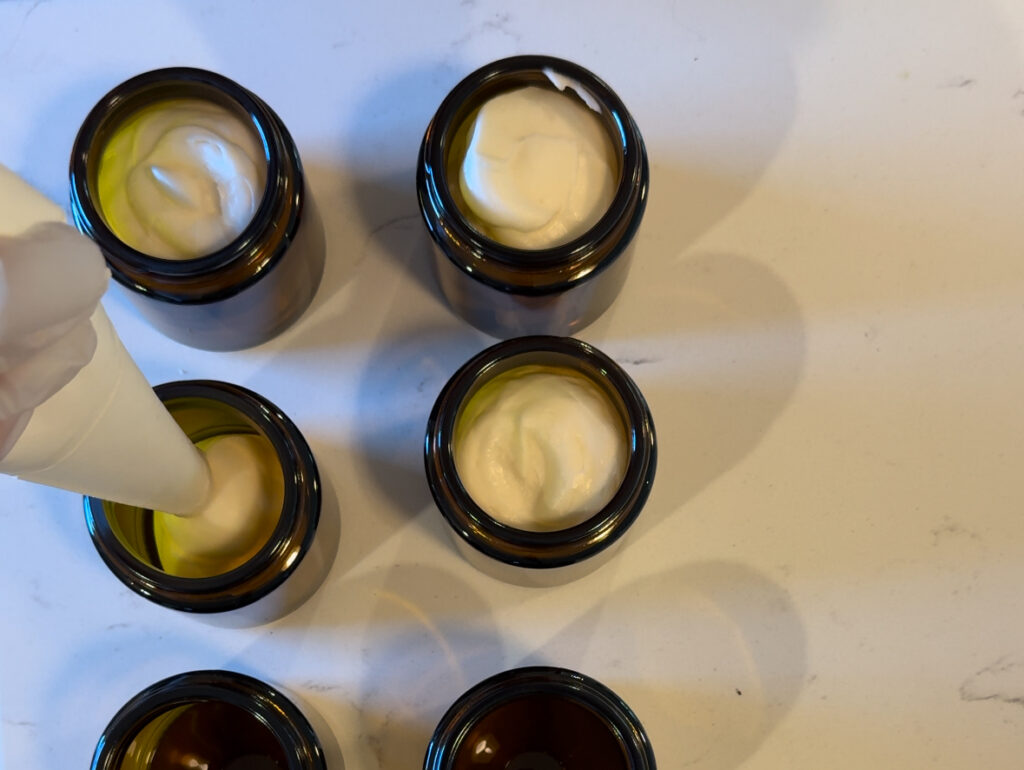
More Beef Tallow Questions Answered
6. Does rendering tallow at home require special equipment? Not really! You only need a slow cooker or a heavy-bottomed pot, a sharp knife, and a strainer or cheesecloth. It’s a straightforward process that doesn’t require any specialized equipment, making it easy to do at home.
7. What is dry vs wet rendering?
Dry rendering and wet rendering are two methods for extracting fat from animal tissues like tallow or lard:
Wet Rendering: Involves simmering the fat in water, which gently separates the fat without overheating it. The water helps prevent scorching and can produce a lighter, milder-smelling fat. Once the fat floats to the top, it’s skimmed off, and the water is discarded. This method is commonly used when a milder flavor or smoother texture is desired.
Dry Rendering: In this method, fat is melted down without adding any water. The process involves heating the fat at a low temperature, which allows the solid fat pieces to release their oil gradually. The result is a pure, shelf-stable fat with a strong flavor. This method is popular for its simplicity and is often used for making tallow.
8. What temperature do you render it at?
A low and slow temperature is best. We don’t want to burn the tallow. I set the crock pot to low for about 12 hours.
9. Do you ever use lard as well?
Lard is from pig fat, while Tallow is Beef Fat. Tallow is often preferred over lard in skincare because its fatty acid profile closely resembles human skin, allowing it to absorb easily and nourish deeply. Rich in vitamins A, D, E, and K, tallow supports skin regeneration and hydration while being stable and less likely to clog pores, making it ideal for sensitive or dry skin.
10. What about your process has you using an electric mixer while some others don’t?
I like to incorporate the ingredients in my Whipped Tallow Balm using an electric mixer- I’ve got my eye on this battery-operated one ;). It creates a whipped, airy, and buttery consistency, just right for piping into my jars.
Final Thoughts
Rendering tallow for skincare is a rewarding and economical way to create natural, deeply nourishing skincare products. I literally, coat myself with our Whipped Tallow Balm in the wintertime after Sunday Sauna and a warm shower. The process is simple, the results are long-lasting, and tallow is packed with skin-loving nutrients. Whether you use it alone as a moisturizer or mix it into a balm, tallow can become a valuable part of your skincare routine.

More Popular Hearty Content:
How to make Elderberry Syrup | A Natural Immune Booster
The Benefits of Contrast Therapy: Sauna + Cold Plunging for Health and Wellness
8 Simple Holiday Crafts | Making Christmas Traditions with your Kids
How to Make Elderberry Fire Cider
How to Make Quick Homemade Elderberry Gummies

Affiliate Disclosure & Content Disclaimer
This post may contain affiliate links from a paid sponsor, Amazon or other program. When you use these links to make a purchase I earn a small commission at no extra cost to you. This allows me to continue creating the content that you love. The content in this article is created for information only and based on my research and/or opinion.
Emily T.
DAILY INSPIRATION ON THE GRAM @hearty.sol
it's hip to be square!
View comments
+ Leave a comment